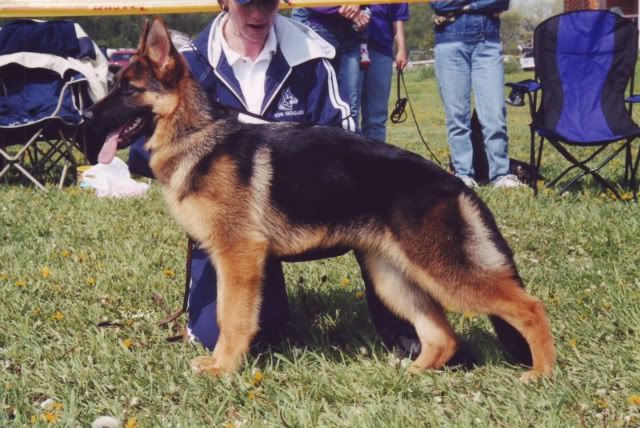
This is a placeholder text
Group text
by dAWgESOME on 15 November 2009 - 03:11
Lower pasterns..

Calling all conform folks, need help with the lingo, thanks!
by VonIsengard on 15 November 2009 - 07:11
by Xeph on 15 November 2009 - 07:11
by Rik on 15 November 2009 - 18:11
Lay back refers to the shoulder blade. Good lay back would be saying that the shoulder blade "angles" back from the sternum at the correct angle to contribute to a good "shoulder" angle.
"needs more lay back" is just a way of saying that the shoulder blade is placed more in an upright position and needs to be placed further back. If you see a dog and think "What a short neck" it is most often caused by the blade being too upright and needing more "lay back".
HTH,
Rik
by Ibrahim on 15 November 2009 - 22:11
Ibrahim
by Rik on 16 November 2009 - 00:11
If you look at the ASS (American show shepherd, sorry I can't stop laughing over this one) most will have a very poorly placed upper arm that contributes to a very wide angle. Yet even with this faulty construction many will have a phenomenal shoulder opening or front reach.
I think that the angles specified in the standard are more what has been determined to allow the dog to trot all day herding rather than just to "reach".
Rik
by SitasMom on 16 November 2009 - 01:11
by dAWgESOME on 16 November 2009 - 02:11
the comment being relative to the shoulder angle makes sense as it has been commented that she is a little short in front reach - so if I'm understanding this that is how it is realated. I do not have any recent properly stacked photos but here is a decent side shot of her standing. Thanks everybody!
by VonIsengard on 16 November 2009 - 04:11
Thanks Amy Prindiville for the photo.

by AandA on 16 November 2009 - 10:11
Now imagine being able to move the joint of the strenum & shoulder blade backwards and forwards along the length of the dog. Pushing this point in, towards the rib cage, would increase the angle between the two and produce both a more vertical upper arm and shoulder blade i.e. less lay back. One of the consequences of this can be a reduced reach.
Pulling this point out, away from the rib cage, will of course have the opposite affect. It will decrease the angle between the two and produce both a less vertical upper arm and shoulder blade i.e. more lay back. One of the consequences of this can be an improved reach.
I find it's often easier to 'feel' the lay of the shoulder than try to see it as coats often have markings that can lead the eye astray.
Cheers,
AandA
Contact information Disclaimer Privacy Statement Copyright Information Terms of Service Cookie policy ↑ Back to top




